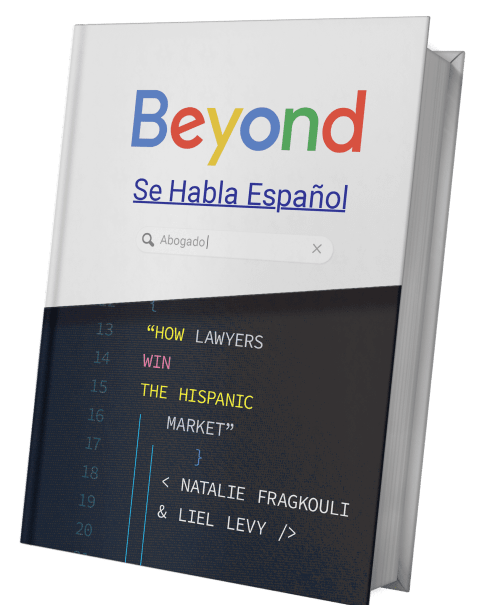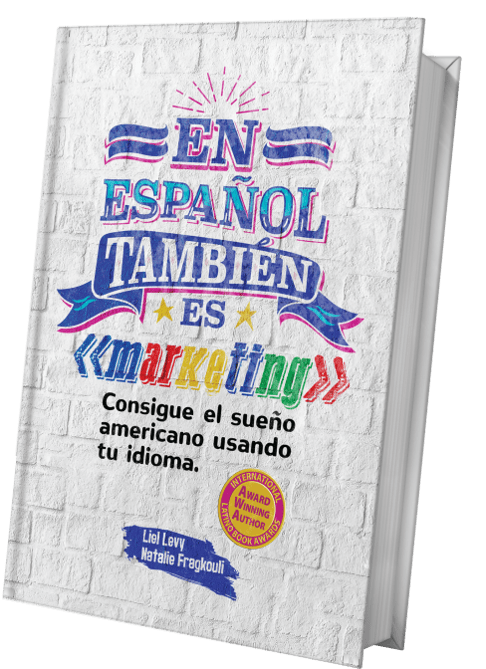SEO is one of the most critical digital marketing components for any business, including Law Firms. While people often concentrate on various other aspects of Search Engine Optimization, they sometimes disregard the value of Meta tags and titles.
In previous articles, we’ve covered several key components of SEO for Law Firms, including the value of unique and authentic content, link building for Attorney websites, and local citations, among others. If you’ve been following our blog, you must know that we put a significant focus on bilingual PPC for Law Firms, as it is the strategy that yields the most immediate and measurable results. Does this mean that we don’t believe in Search Engine Optimization for Attorneys? On the contrary, we don’t work in silos, and today we’ll guide you through Metatags and titles, one of the multiple crucial components for your success with SEO.
- What are Meta Tags?
Meta tags are metadata, in simpler words, information about a webpage in the form of HTML code. While metadata is not visible and available to the reader, it is crucial as the Search Engine, and web crawlers read it and get vital information. Search engines like Google collect additional data from Meta Tags and understand the content in a more comprehensive and detailed way. Additionally, they are essential for features like featured snippets.
Below you can see an example of a meta description.

Meta tags are nothing new to SEO experts. They are among the most covered topics and the first you’d hear in any seminar or online course. People often concentrate on the two most known and basic meta, the description and the keywords. But are these the only ones? Definitely not, the list is extensive, and in this article, we’ll split it into three, the good ones, the bad ones, and the ones in between.
- The Good Meta Tags
By good, we mean that they are indispensable to any strategy; no Law Firm website should be built without them to contribute to better SEO performance. These are a must, so ensure that you always use them.
- Title Tag: That’s the HTML code that specifies the title of each of your Law Firm’s web pages. You can see them on the Search Engine Results Pages (SERPs), and they are the clickable title of your organic result. It’s crucial for two main reasons, first for SEO as it helps search engines, and second for UX as it gives a brief overview of the page to the searcher. The code format is and the length 50-60 characters according to Google Guidelines.
Tip: Title Tags are also displayed when someone is sharing your content on Social Media, so make sure that it’s always relevant and to the point.
- Header Tags (H1): These are similar to the title tags, but generally, they don’t show up on the SERPs. Their function is to appear within your webpage, displaying a larger, more comprehensive text.
- Meta Description: We’ll put it in simple words, if we were talking about your Law Firm’s PPC, this would be your Ad copy. So that’s the short description that plays a vital role in determining if a searcher will click on your organic result or not. Descriptions don’t officially influence rankings, but they are critical to your website’s performance and user experience. Even if they don’t directly impact your rankings, they affect your CTRs, which will indirectly contribute to your SEO performance. Makes sense?
Below you can see how we use them:

- Meta Content-type: This meta determines your website’s rendering; in other words, the visitor’s journey with your Law Firm. There are several options, and your web designer/developer should never forget about it.
- Viewport: It determines how the searcher will view your website on each device. We’re living in a mobile world. Especially when talking about Hispanics, mobile importance is even higher, so pay particular attention as you don’t want to give your mobile visitors a poor experience.
- Language: We are bilingual, so we have to add this to the essential tags. That will show Google the Spanish part of your website, especially when you want to declare your primary language.
That’s the list of the must-do meta, it’s not too big, and it’s straightforward, so if you want to start with what matters the most, this is what you need to fine tune first.
Tips:
1) Write compelling descriptions, just like your ad copies, create something your prospective clients want to click on.
2) Avoid duplicate meta descriptions. Each page should have its unique description, adding value to your website.
3) Don’t overdo it with Keywords, especially on the title. Keep it short and to the point; both Search Engine bots and searchers will appreciate it. Remember always to put your focus on the important keyword and put it first. That’s how it should look like: Brand Name | Major Product Category – Minor Product Category – Name of Product
4) Give unique titles to each different web page.
5) Write to your prospective clients, not just for the Search Engines.
6) Include the primary keyword on both the Title Tag and the Header Tag.
- The indifferent Meta Tags:
These are meta tags used in certain circumstances, but they’re not a necessity; for most of them, we’d advise you to avoid if possible.
- Social Meta Tags: These are the most important out of the indifferent Meta Tags. They define precisely how titles, images, descriptions, etc., will appear on Social Media platforms such as Facebook and Twitter. Not mandatory, if you are precise on your main tags, you’re all set, but if for some reason you need to take this path, it can be a positive addition, especially for sharing.
- Robots: That’s only to be used if you need not index a specific page or not follow a link.
- GoogleBot: They were more widely used in the past, but as AI evolves and bots become more advanced, they know what to read, understand, and index, so they don’t need specific instructions.
- Keywords: Often, this comes as an automated add-on with CMSs like WordPress, so no need to remove it, but if you have to build it manually, there’s no point in investing time and resources. The chances of contribution to your overall SEO are incredibly slight.
- Refresh: That’s more of a don’t do it meta. It’s used to redirect to another page. Google doesn’t appreciate it. If you need a redirect, perform it on your server (301-redirect).
- Site Verification: There are better ways to verify your website, such as linking your analytics accounts, so go for it and use the data that comes with that.
- The Bad Meta Tags:
It doesn’t mean that you will get penalized for using them, but they’re a waste of time, effort, and space. We’ll just list the tags below so that you can know and avoid them.
- Revisit after.
- Resource type.
- Cache-control.
- Generator.
- Distribution.
- Rating.
- Author.
- Expiration.
- Date.
- Distribution.
- Abstract.
- Copyright.
Time for our key takeaways:
- Meta Tags are critical for an enhanced user experience and a better SEO performance.
- They can, directly or indirectly, affect your rankings and the satisfaction of your prospective clients.
- Put your focus on what matters most. You get no added value by adding endless meta tags to your website.
- Prioritize your keywords, work on your messaging, and set a tone that reflects your brand image and content.



